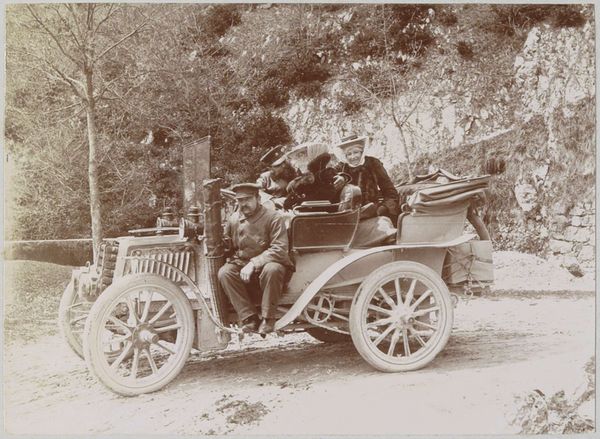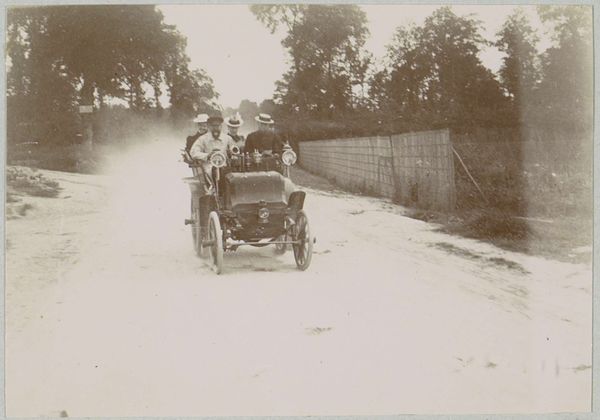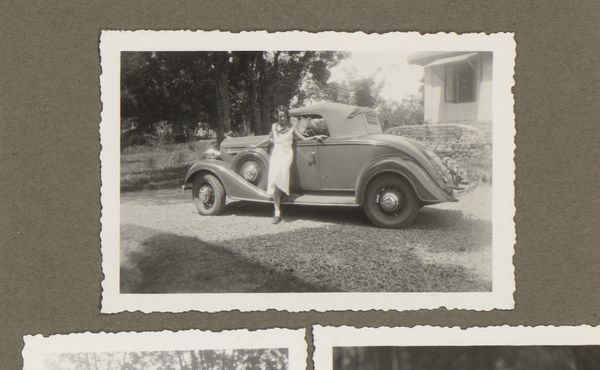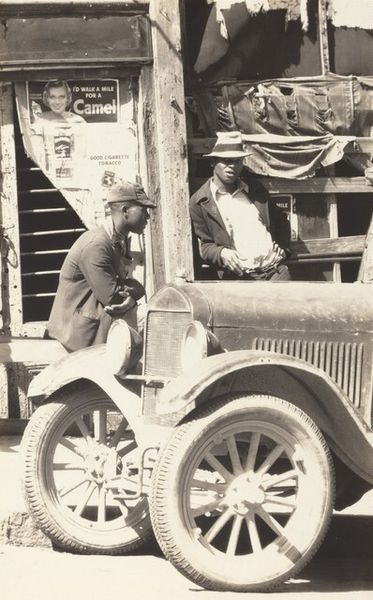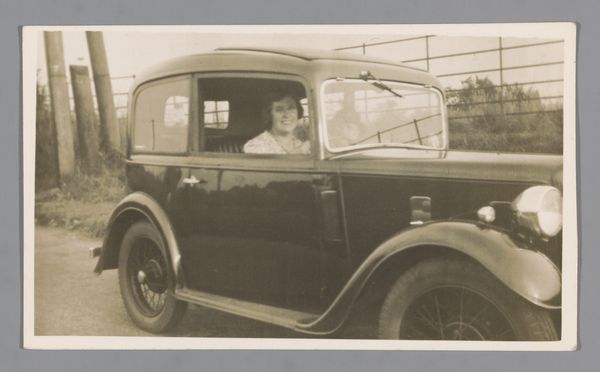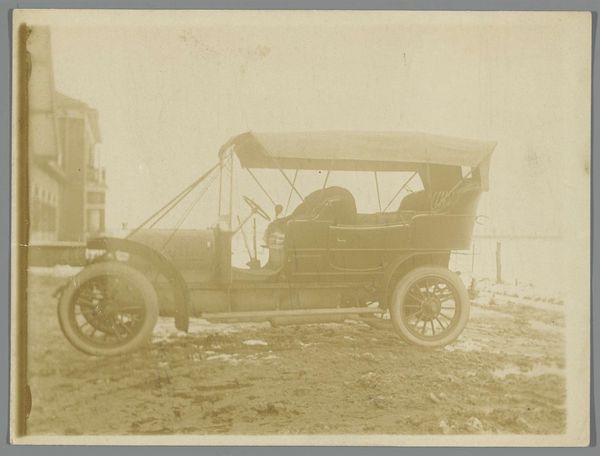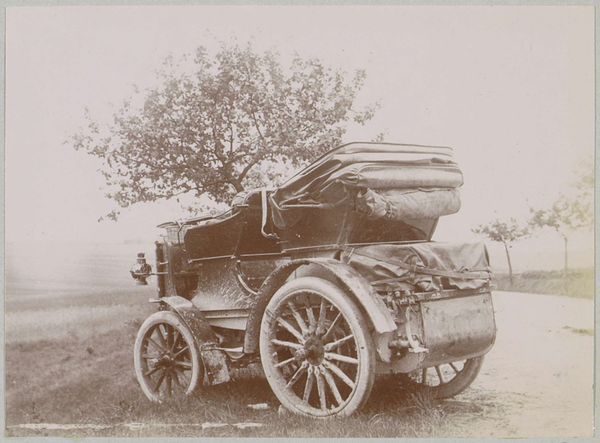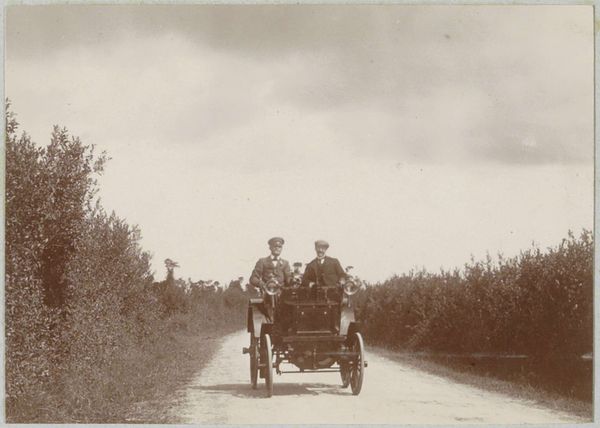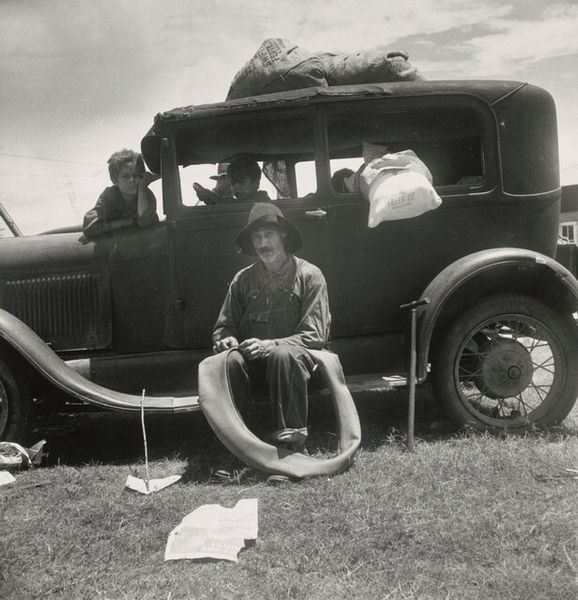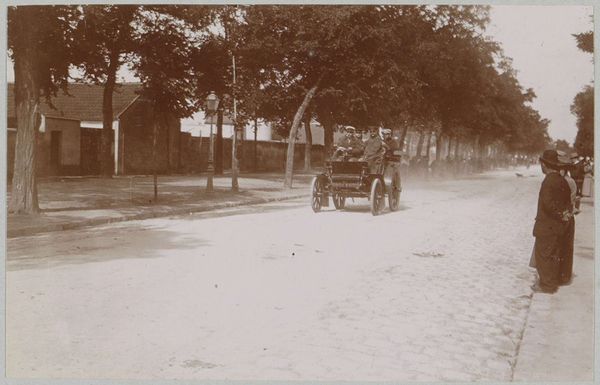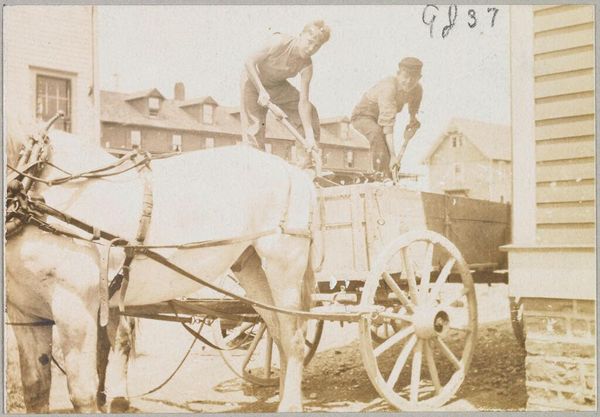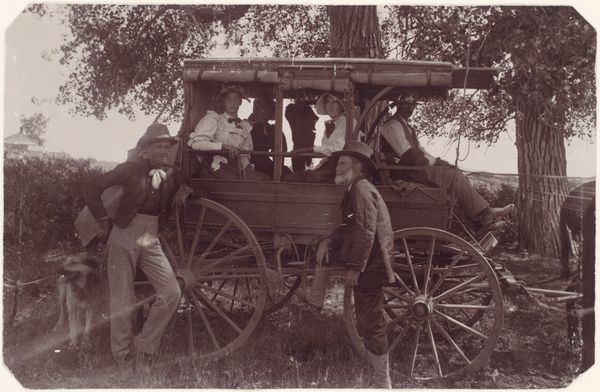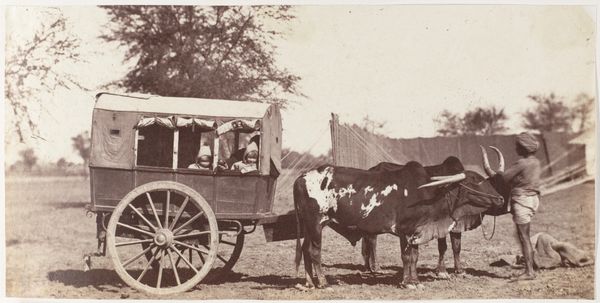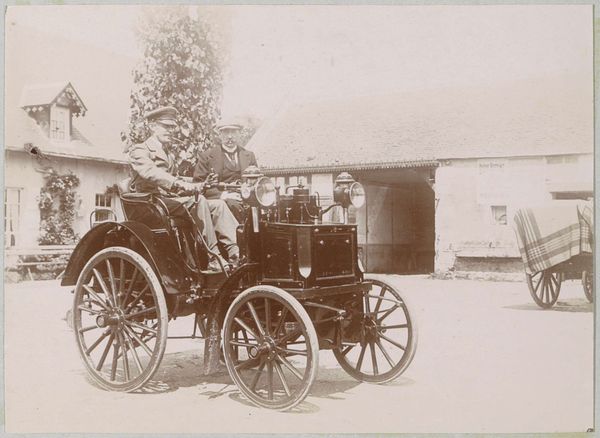
photography
#
portrait
#
still-life-photography
#
black and white photography
#
photography
#
monochrome photography
#
genre-painting
#
realism
#
monochrome
Dimensions: image: 7.7 × 9.9 cm (3 1/16 × 3 7/8 in.) sheet: 8.7 × 14 cm (3 7/16 × 5 1/2 in.)
Copyright: National Gallery of Art: CC0 1.0
Editor: Here we have an intriguing photographic portrait titled "Untitled (Man in a car)" from around 1915, made by an anonymous artist. It's rendered in stark monochrome, which really gives it a vintage feel. I'm struck by how the textures in the photograph – the rough bark of the tree, the smooth curves of the car – really stand out. What formal elements jump out at you? Curator: Indeed. Focusing on the composition, we can observe how the photographer uses the tree as a framing device, drawing the eye toward the man in the car. Consider also the interplay of light and shadow. The stark contrast isn’t merely a product of the monochrome medium but a deliberate choice affecting the visual weight and focal point. How does this contrast influence your reading of the subject matter? Editor: I guess the contrast almost theatrical, drawing my eyes to the gentleman’s gaze, rather than his surroundings. His pale outfit seems to reflect and grab my attention, not necessarily to denote status, but rather in service to a visual hierarchy. I almost didn’t see the rest of the composition beyond him. Curator: Precisely. We should also attend to the geometric forms at play: the circular wheels, the rectangular body of the car, and the somewhat pyramidal shape of the tree. Note how these forms contribute to the photograph's structural integrity. The composition moves past pure representation of form to an arrangement, the geometric aspects contribute to the photograph's visual architecture, directing the observer's gaze. The formal interplay of shapes is intriguing; don't you think? Editor: Definitely, thinking about these aspects offers a fresh perspective, shifting from what the photograph represents to how it presents it. Thank you. Curator: A close analysis of the composition, texture, and use of light encourages a deeper engagement, appreciating how those choices contribute to the photograph's aesthetic power.
Comments
No comments
Be the first to comment and join the conversation on the ultimate creative platform.
